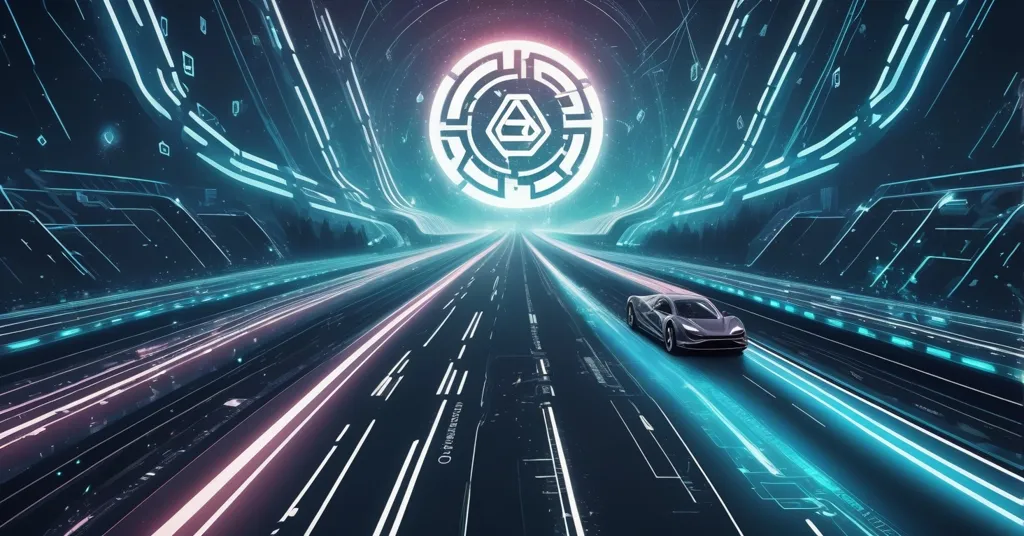Cardano Unveils Ouroboros Leios: Targets 11,000 TPS to Boost Blockchain Speed

Cardano’s Ouroboros Leios: Aiming for 11,000 TPS to Redefine Blockchain Speed
Charles Hoskinson, the visionary behind Cardano, has unveiled the ambitious Ouroboros Leios protocol, promising to catapult the blockchain’s transaction speed to an astounding 11,000 transactions per second (TPS). This upgrade aims to pave the way for a future where Cardano can handle high-speed operations without compromising its core values of decentralization and security.
- Ouroboros Leios boosts Cardano’s transaction speed to 11,000 TPS
- Maintains decentralization and security through existing proof-of-stake ledger
- Testnet “Face Melting Net” uses AI agents to simulate high-speed operations
During a recent livestream, Hoskinson revealed that Ouroboros Leios is designed to be “infinitely scalable.” This means the protocol can grow its throughput by adjusting the input-block (IB) rate, essentially processing multiple input blocks in parallel. In simpler terms, it’s like upgrading a highway to have more lanes, allowing more cars (transactions) to travel simultaneously. “With just one input block, you can see that maximum is about 6 TPS,” Hoskinson explained, showcasing the protocol’s flexibility and potential power.
The upgrade will seamlessly integrate with Cardano’s current proof-of-stake ledger, a method to secure the network where participants validate transactions based on the number of coins they hold. “It can collapse back down to the current protocol should any unforeseen fault occur,” Hoskinson reassured, emphasizing the safety net built into Leios. This ability to revert to previous protocols is crucial for maintaining user trust and network stability.
To ensure Ouroboros Leios can handle the promised high-speed operations, Cardano will launch a testnet dubbed “Face Melting Net” (FMN). This testnet will be populated with thousands of AI agents, simulating real-world conditions to stress-test the network’s speed, security, and scalability. “We’ll populate it with thousands of AI agents to trade amongst each other. Any Cardano DApps want to sign up to deploy on Face Melting Net? FMN,” Hoskinson invited, showcasing the project’s open approach to testing and development. With a name like “Face Melting Net,” it sounds like Cardano’s testnet could be the next big thing at summer music festivals!
The implementation of Ouroboros Leios is expected to take between nine to twelve months, affecting nearly every aspect of the Cardano blockchain. From the ledger and consensus rules to the cryptography, this upgrade is comprehensive and ambitious. “It typically takes about nine months to twelve months of implementation effort from a Standard Improvement Proposal (SIP) to bring this into the protocol,” Hoskinson explained, setting realistic expectations for the community.
Cardano’s roadmap for 2025 includes not just Leios but also other Layer-2 solutions like Hydra and Mithril, reflecting a multi-tiered approach to enhancing performance. These solutions, designed to work in tandem with Leios, aim to further boost the network’s scalability and efficiency. The successful implementation of these upgrades could lead to a Cardano Improvement Proposal (CIP) for Leios, with stakeholders potentially voting on it in early 2026.
Hoskinson described Leios as “the crowning achievement of ten-plus years of careful thought, research, and engineering.” This statement underscores the significance of the upgrade, not just for Cardano but for the broader blockchain industry, which is increasingly focused on improving transaction speeds and scalability without compromising core principles. Imagine being able to buy your coffee with Cardano as fast as swiping a credit card – that’s the future Leios promises.
While the promise of 11,000 TPS is exciting, it’s worth tempering our enthusiasm with a dose of reality. The blockchain space is notorious for ambitious promises that don’t always pan out as expected. Some skeptics might argue that such high transaction speeds are unnecessary or even unattainable. However, Cardano’s methodical, research-driven approach gives us hope that Leios could indeed be the game-changer it’s touted to be. As we watch this unfold, let’s keep our eyes peeled for any bumps in the road, but also celebrate the potential for a more efficient and scalable Cardano.
Moreover, the integration of AI agents in the FMN testnet highlights the growing intersection of AI and blockchain technology. These AI agents simulate real-world conditions, making fast decisions based on real-time data to stress-test the network. This approach not only ensures robustness but also positions Cardano at the forefront of technological innovation.
Cardano’s commitment to quantum resilience as part of its 2025 roadmap is another facet to consider. Ouroboros Leios contributes to this goal by enhancing the network’s security against potential quantum computing threats, ensuring Cardano’s long-term viability in an ever-evolving technological landscape.
As Cardano pushes forward with Ouroboros Leios, it’s clear that the project is not just about chasing numbers but about building a robust and scalable future for blockchain technology. The potential impact on Cardano’s decentralized applications (DApps) and the broader DeFi ecosystem cannot be understated, as these enhancements promise to support a thriving environment for developers and users alike.
Economically, the successful implementation of Leios could have significant implications for Cardano’s native token, ADA, currently trading at $0.71. Increased scalability and efficiency could boost investor confidence and drive further adoption of the network.
Key Takeaways and Questions
- What is the Ouroboros Leios upgrade?
The Ouroboros Leios upgrade is a new protocol for Cardano aimed at significantly increasing transaction speeds to up to 11,000 TPS, while maintaining scalability, decentralization, and security.
- How will Ouroboros Leios affect Cardano’s performance?
It will potentially boost Cardano’s transaction speed and scalability, allowing the blockchain to grow continuously without compromising its security and decentralization.
- What is the ‘Face Melting Net’?
The ‘Face Melting Net’ (FMN) is a testnet designed to simulate high-speed operations by populating it with thousands of AI agents to test the Ouroboros Leios protocol.
- When is the expected timeline for implementing Ouroboros Leios?
The implementation is expected to take between nine to twelve months.
- What other solutions will launch alongside Ouroboros Leios?
Leios will launch alongside Hydra and Mithril, which are Layer-2 solutions for Cardano.
- When could stakeholders vote on the Leios CIP?
Stakeholders could potentially vote on the Leios Cardano Improvement Proposal (CIP) in early 2026.
- How does Ouroboros Leios compare to other blockchain scalability solutions?
Ouroboros Leios is unique in its approach to scalability by using parallel processing of input blocks, which differs from other solutions like Ethereum’s sharding or Bitcoin’s Lightning Network.
As Cardano continues its journey with Ouroboros Leios, it’s clear that the project is not merely about chasing numbers but about building a robust and scalable future for blockchain technology. While we remain cautiously optimistic, the potential of Leios to revolutionize Cardano’s performance is undeniably exciting. Let’s keep our fingers crossed that this upgrade lives up to its lofty promises and continues to champion the values of decentralization and security that make blockchain technology so powerful.



